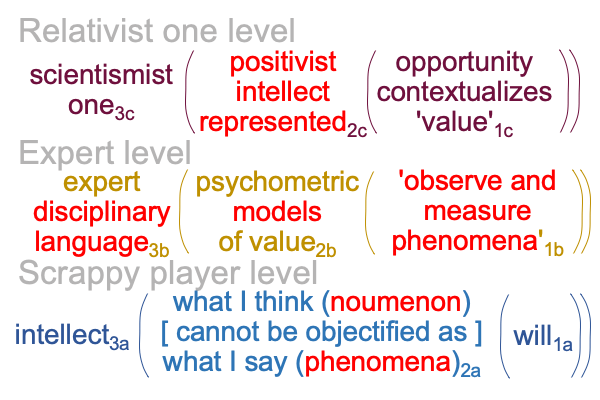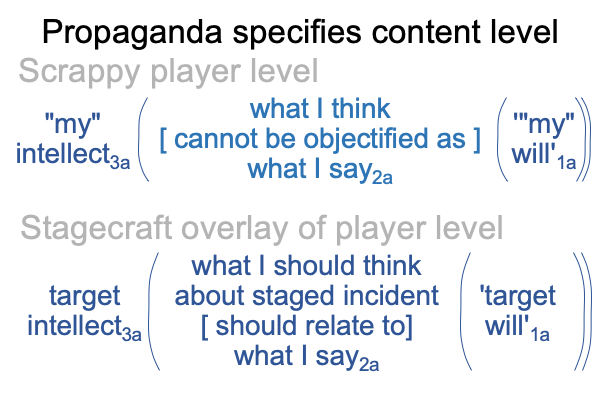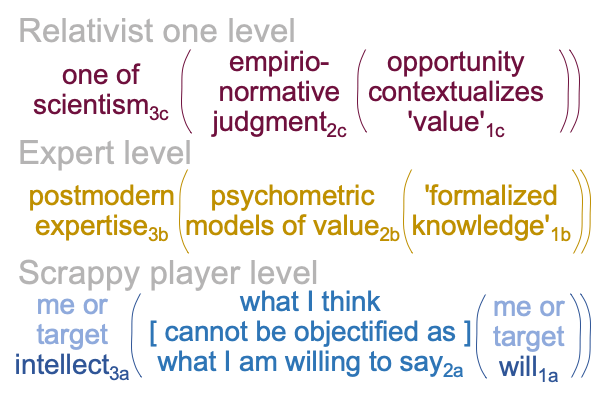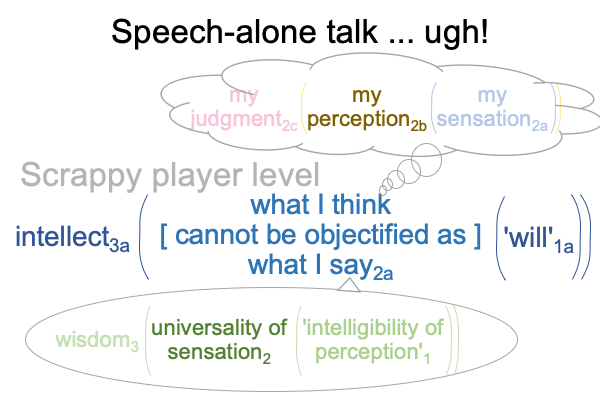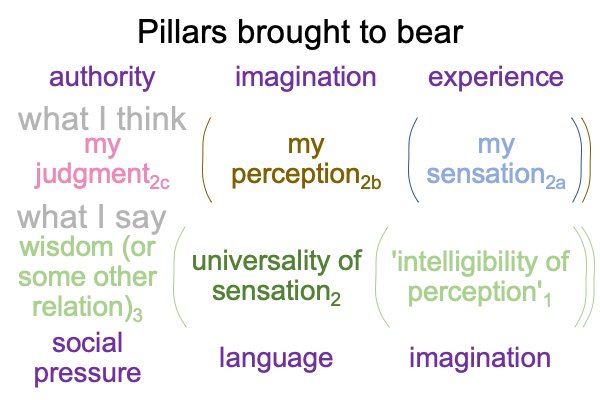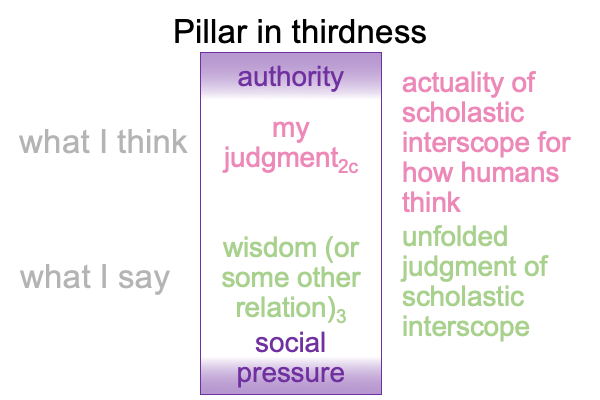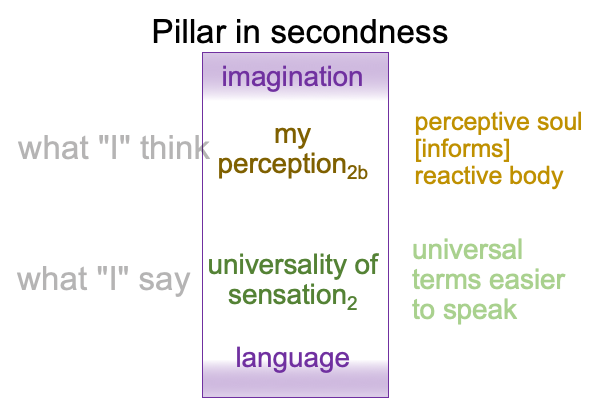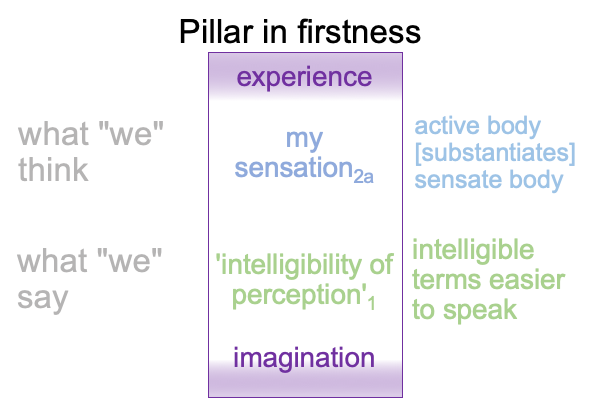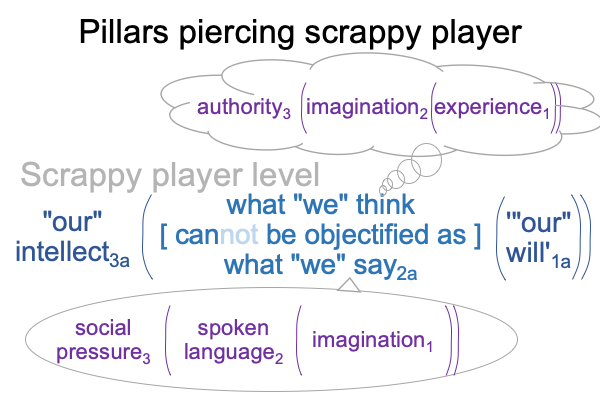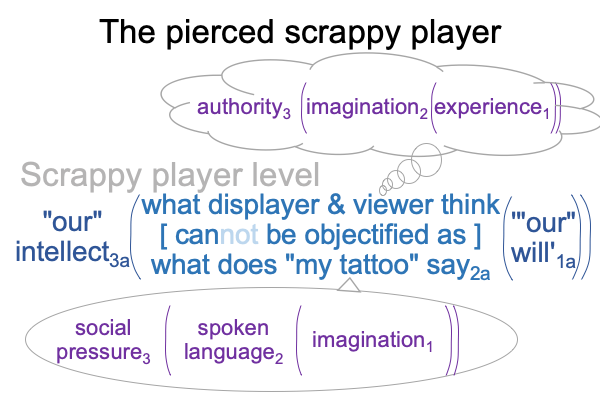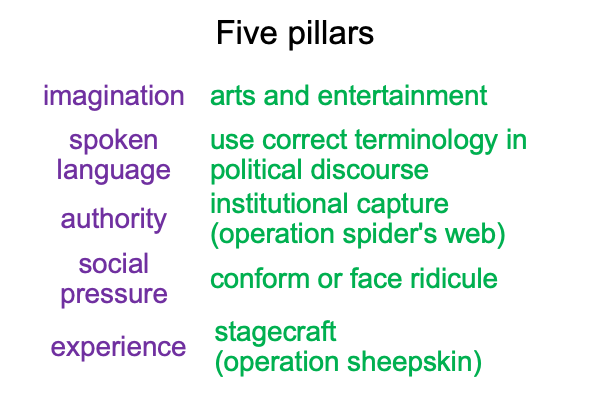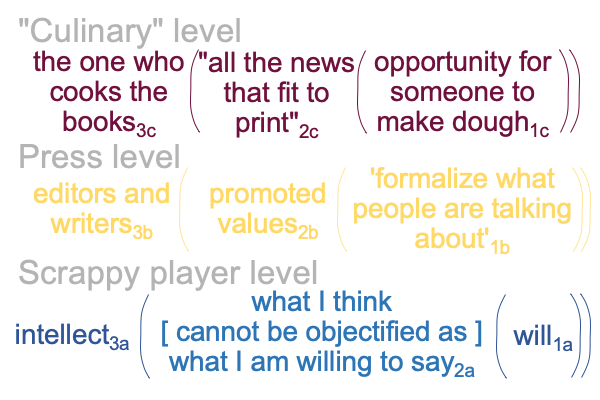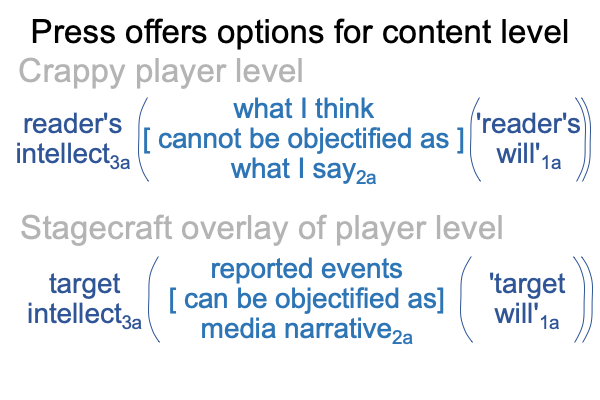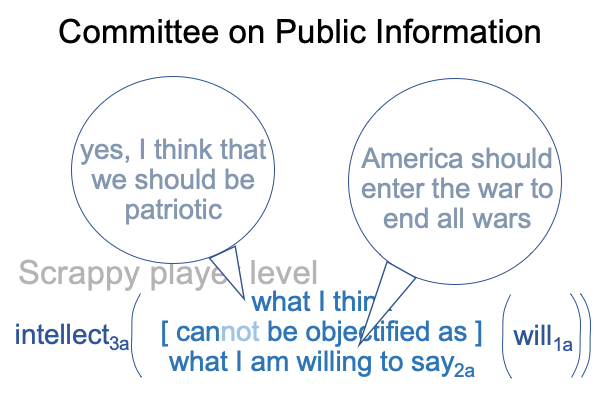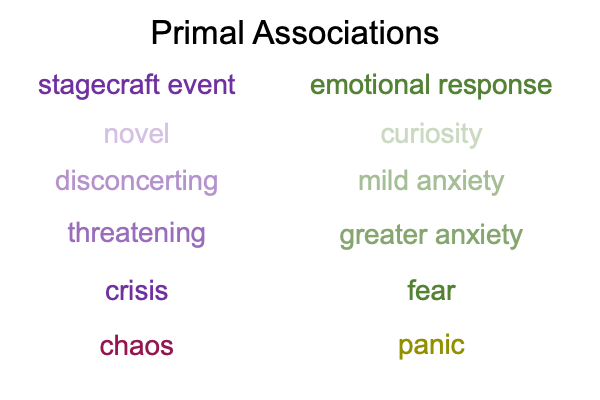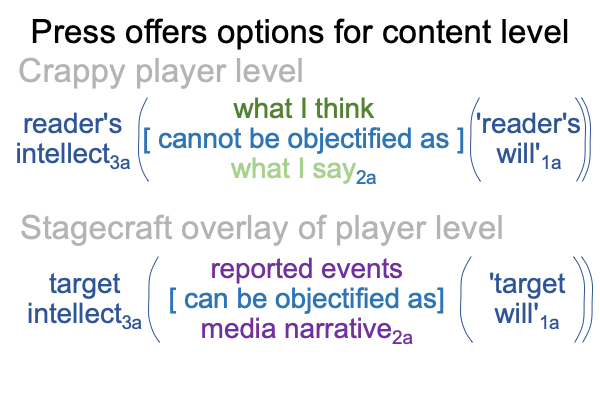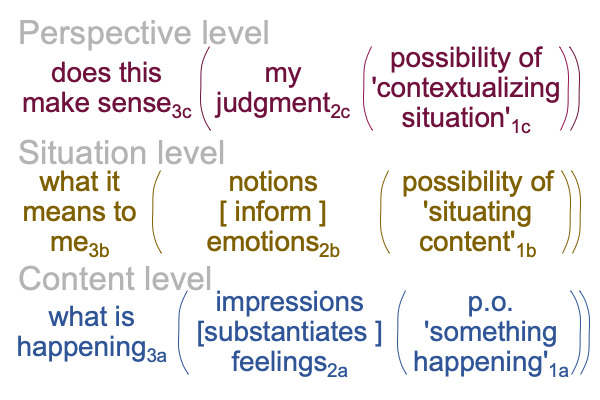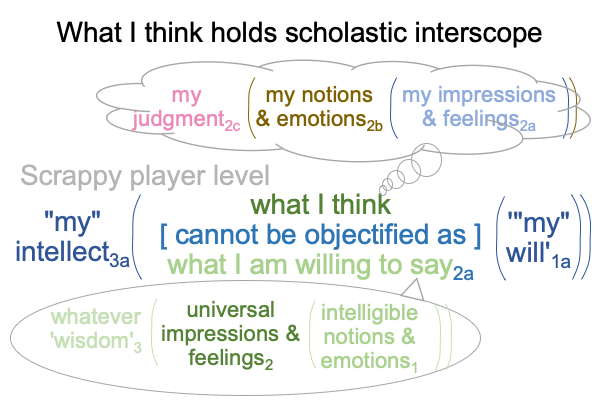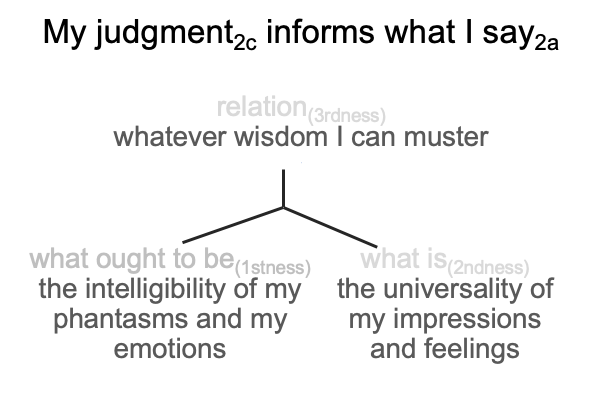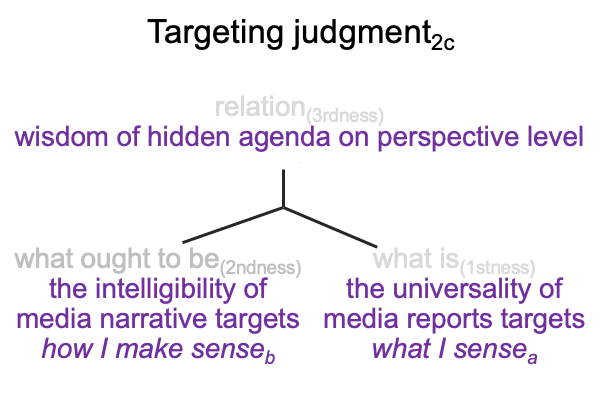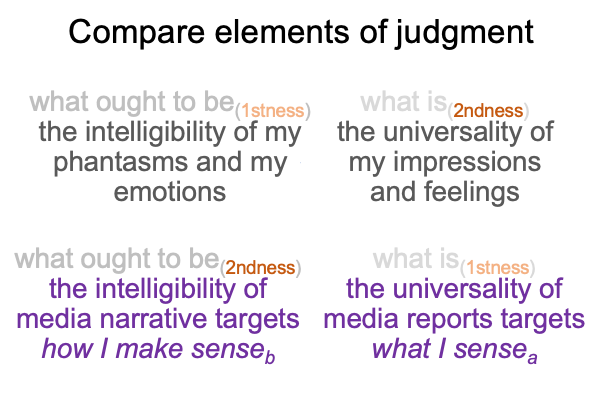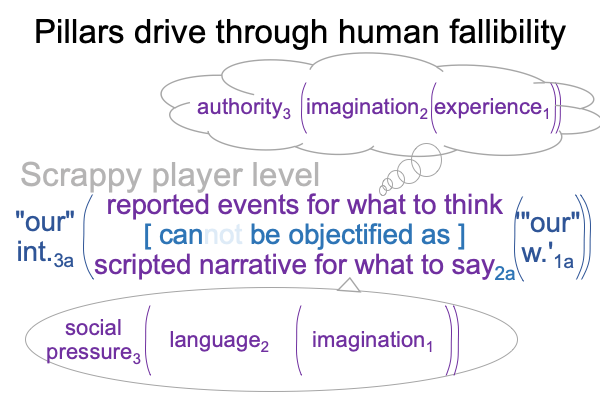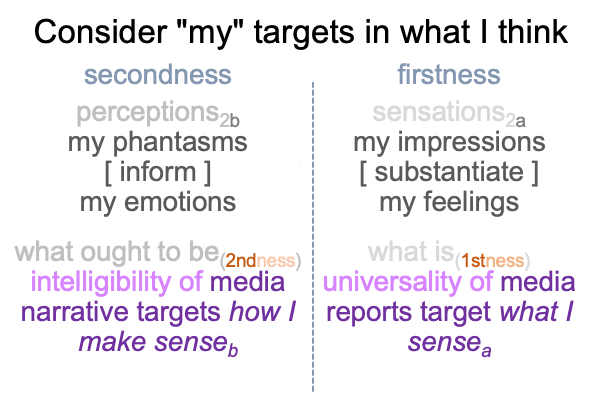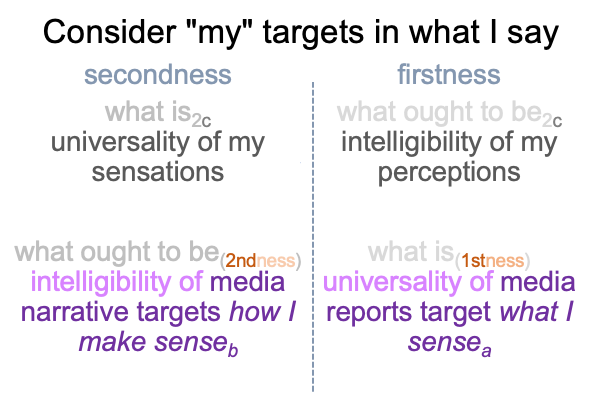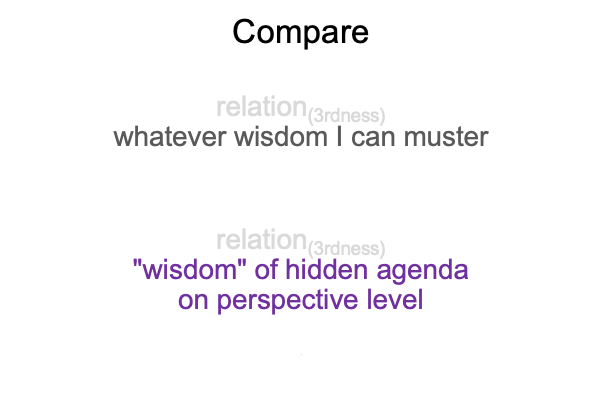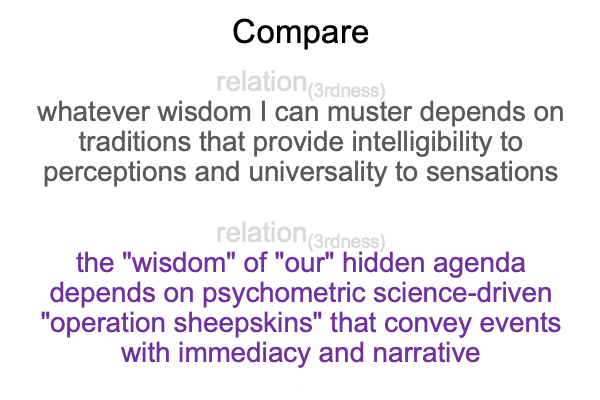Looking at Michelle Stiles’s Book (2022) “One Idea to Rule Them All” (Part 8 of 23)
0579 Now, let me go back to that philosophical judgment.
Does it associate to what I say2a?
Hmmm….
0580 Actionable judgments unfold according to Peirce’s categories.
Here is the nested form corresponding to the above philosophical judgment.
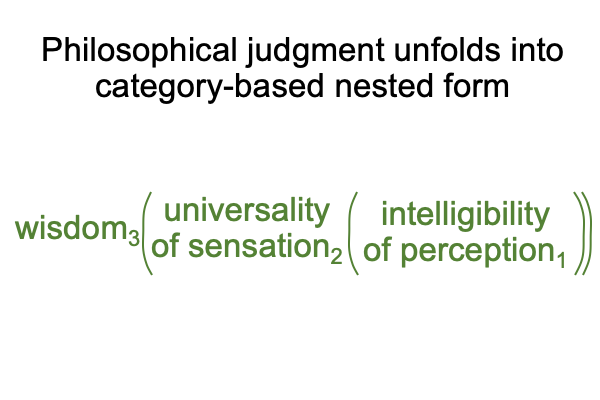
0581 The normal context of wisdom3 brings the universality of sensation2 into relation with the potential for intelligibility of perception1.
0582 This nested form is magnificent, but it has an Achilles heel.
The perspective-level philosophical judgment evolves in the Lebenswelt that we evolved in, when hominins practice hand talk and implicit abstraction. Hand talk and implicit abstraction are holistic, so there is no avenue to disarticulate the elements of actionable judgment and its corresponding nested form. In hand talk, what I think is embodied as what I say. So, the entire scholastic interscope is built into the human body and soul. Meaning, presence and message are not differentiated.
In our current Lebenswelt, people use spoken words. Spoken words are not holistic. They are specific. Indeed, what I think2a (for example, as formulated by the scholastic interscope for how humans think) is very difficult to put into spoken words2a. However, my judgment is easy to speak, because spoken words are available (if not already suggested, by an ongoing interventional sign-vehicle (SVi) and interpretant (SIi).
0583 Yes, what I think2a and what I say2a both belong to the interventional sign-object (SOi).
However, what I think2a is holistic because it manifests as an interscope and what I say2a is not, because it manifests as an actionable judgment.
0584 Speech realizes that actionable judgment in the following manner.
After the actionable judgment unfolds into a category-based nested form, spoken conversation typically deals with actualities, then later, potentials, and lastly, normal contexts.
Here is another picture of the scrappy player level, with these developments in mind.
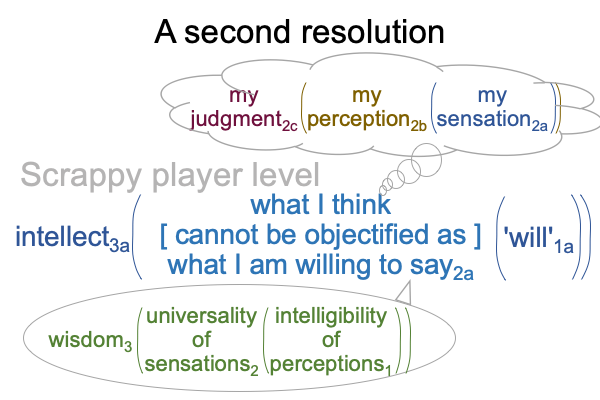
0585 Uh oh. I am starting to see that what I think and what I say are not the same nested forms.
And the key is secondness. After all, secondness is the realm of actuality. So, if anything comes to the fore, it will be the realm of actuality.
0586 What I think is denoted by a virtual nested form in secondness where the normal context of my judgment2c brings the actuality of my perceptions2b into relation with the potential of my sensations2a. My perception2b associates to actuality2 on the situationb level, which makes perception2b an actuality2 occurring on the levelb associated with actuality.
So, perception2b stands out as far as what I think is concerned.
0587 What I say is different. The universality of sensation gives what is the character of secondness. The intelligibility of perception imbues what ought to be with the character of firstness. The relation, wisdom, if I can call it that, associates with thirdness.
0588 In sum, secondness (or the character of actuality) goes with perception for what I think and with sensation for what I say. So, what I say2a will initially speak about sensation and universality, within the normal context of the intellect3a and the potential of the will1a for the scrappy player.
0589 What does that imply?
What I say2a does not necessarily objectify what I think2a, because I (a scrappy player) will first talk about sensations (actuality2) as if my sensations are universal, then perceptions (potential1) as if my perceptions are intelligible, and finally, about whether any of this makes sense (normal context3), as if some sort of wisdom is involved.
0590 Ah, that last sentence sounds like what is of the Positivist’s judgment. A noumenon [cannot be objectified] as its phenomena.
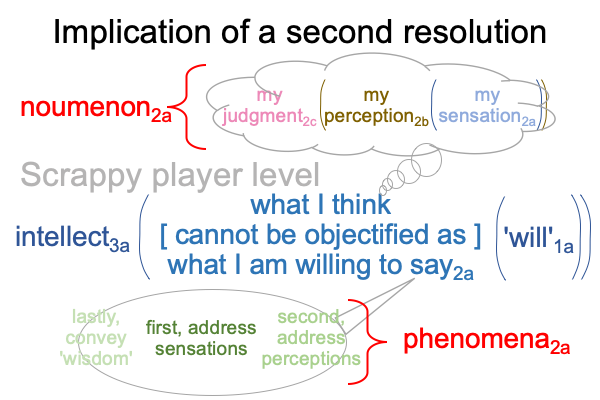
0591 Whoa! Put on the brakes!
Let me pause and take a deep breath and first consider the Positivist’s judgment.
Here is a picture.
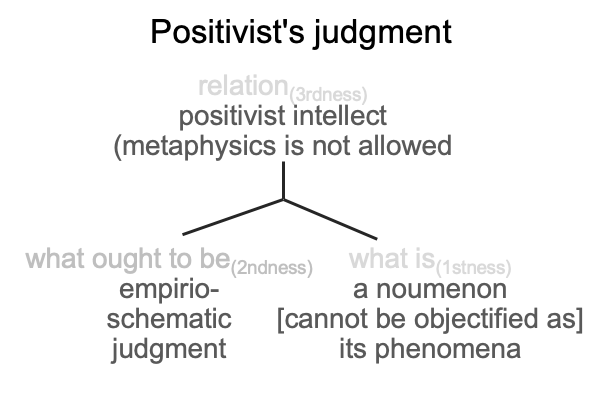
A positivist intellect (relation, thirdness) brings an empirio-schematic judgment (what ought to be, secondness) into relation with the dyad, a noumenon [cannot be objectified as] its phenomena (what is, firstness). The positivist intellect has a rule. Metaphysics is not allowed.
Plus, for the empirio-schematic judgment, a disciplinary language (relation, thirdness) brings mathematical and mechanical models (what ought to be, secondness) into relation with observations and measurements of phenomena (what is, firstness).
0592 These two interlocking judgments are developed in Comments on Jacques Maritain’s Book (1935) Natural Philosophy.
0593 Now I may return to the interscope of the post-truth condition and consider how the Positivist judgment might unfold into the virtual nested form in the realm of actuality (that is, the second column).
What is (belonging to firstness) goes with the contenta-level actuality2.
What ought to be (belonging to secondness) consists in the empirio-schematic judgment, unfolding to occupy the entire the situationb-level.
That leaves only the relation of the Positivist’s judgment, labeled “the positivist intellect”. The empirio-normative judgment2c represents the positivist intellect. The positivist intellect has a rule. Metaphysics is not allowed. The empirio-normative judgment2c obeys the same rule.
0594 Here is a picture of the interscope of the post-truth condition with key words of the Positivist’s judgment displayed.
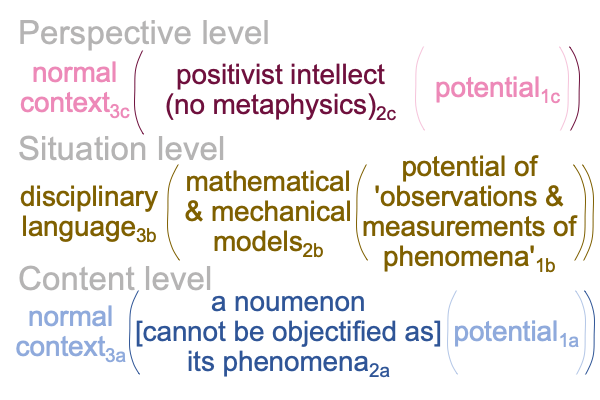
0595 Okay, the interscope of the post-truth condition expresses the Positivist’s judgment in expansive style. The Positivist’s judgment expands into all levels. Also, the empirio-schematic judgment expands into a category-based nested form on the situation level.
On the scrappy player level, the noumenon, the thing itself, corresponds to what I think and associates to the prescientific scholastic interscope for how humans think. What I say associates to the relational structure of human judgment and corresponds to phenomena, that will be situated as observations and measurements1b by experts3b in the post-truth interscope.
On the expert level, the empirio-schematic judgment unfolds.
On the relativist one level, the positivist intellect is represented by the empirio-normative judgment2c.

